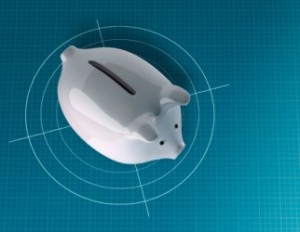When saving money isn’t saving
People are very confused about how to make their savings stay put. Hey, if you're saving the money, you can't touch it! It's off limits.
Advertisement
People are very confused about how to make their savings stay put. Hey, if you're saving the money, you can't touch it! It's off limits.
 When I flew West on my last book tour, I met a young lady who was a huge fan. She described herself as a great saver. In her next breath, she described the debt she was getting into because she was such a great saver. Hang on a second!
People often misunderstand what “saving” is. Saving is “not spending money” and if you want to have “savings” you have to take the money you didn’t spend and put it somewhere to accumulate for the future.
So what was she doing wrong? According to her, she was having money taken from her chequing account every month and moved to about eight different pools of savings: vacation fund, long term savings, emergency fund, to pay her insurance, to pay for presents… it was a long list.
Here’s where her system broke down: having moved all that money out of her chequing account, she’d have to often dip into her “savings” to make ends meet. Or she’d end up putting stuff on her credit card she couldn’t pay off.
Hey, if you’re salting money away on one side of your ledger, and racking up debt on the other, that is NOT saving.
To make saving work, you first have to start with a balanced budget. Then you have to track your spending so that you can ensure you’re on track with how you planned to spend your money.
BTW, if you’re sticking money away for a vacation, for present buying or for insurance, that’s not savings; it’s “planned spending.” Yes, you’re smart to accumulate money for big spends right along with your day-to-day needs. But it’s not savings. Unless it’s going into an emergency fund, or a long-term savings fund – think retirement or school – it’s not “savings.”
When I flew West on my last book tour, I met a young lady who was a huge fan. She described herself as a great saver. In her next breath, she described the debt she was getting into because she was such a great saver. Hang on a second!
People often misunderstand what “saving” is. Saving is “not spending money” and if you want to have “savings” you have to take the money you didn’t spend and put it somewhere to accumulate for the future.
So what was she doing wrong? According to her, she was having money taken from her chequing account every month and moved to about eight different pools of savings: vacation fund, long term savings, emergency fund, to pay her insurance, to pay for presents… it was a long list.
Here’s where her system broke down: having moved all that money out of her chequing account, she’d have to often dip into her “savings” to make ends meet. Or she’d end up putting stuff on her credit card she couldn’t pay off.
Hey, if you’re salting money away on one side of your ledger, and racking up debt on the other, that is NOT saving.
To make saving work, you first have to start with a balanced budget. Then you have to track your spending so that you can ensure you’re on track with how you planned to spend your money.
BTW, if you’re sticking money away for a vacation, for present buying or for insurance, that’s not savings; it’s “planned spending.” Yes, you’re smart to accumulate money for big spends right along with your day-to-day needs. But it’s not savings. Unless it’s going into an emergency fund, or a long-term savings fund – think retirement or school – it’s not “savings.”
Share this article Share on Facebook Share on Twitter Share on Linkedin Share on Reddit Share on Email